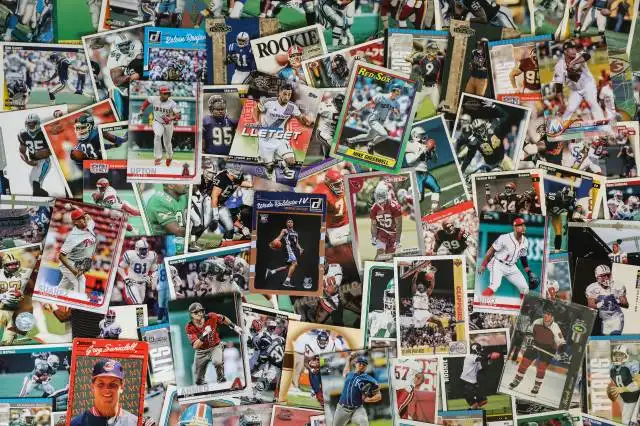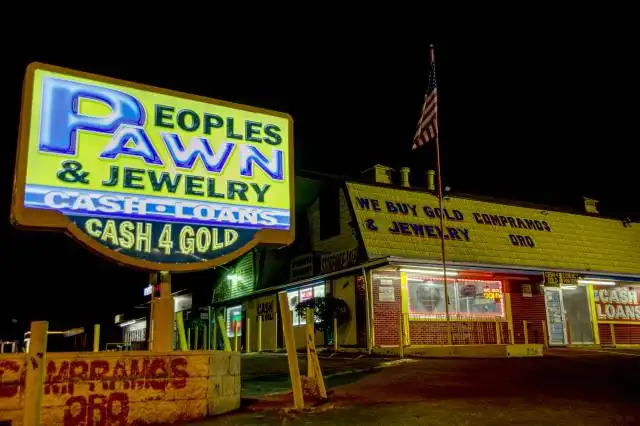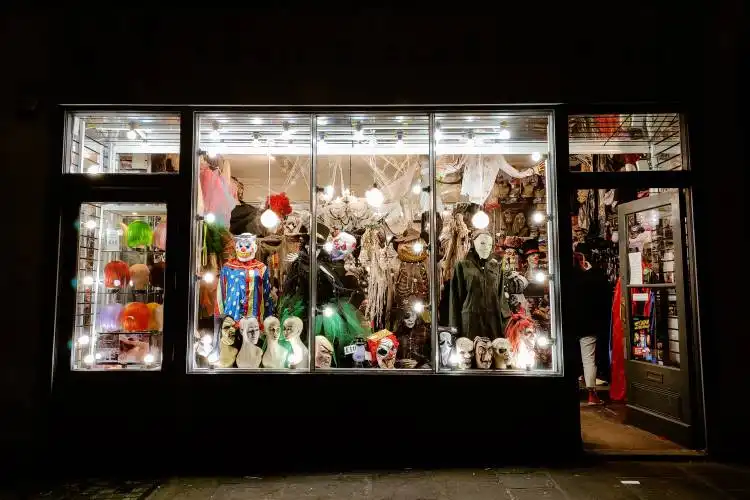Start a Thrift Store Business
Discovering Treasures: The Thrills and Spills of Running a Thrift Store
| Updated


THRIFT STORE BUSINESS
Like a treasure hunter, running a thrift store business is all about the thrill of the find. Pre-loved items, vintage goodies, the obscure and the unique - they all find their way to your counters. Your thrift store is like a second shot at life for these items, a sanctuary where worn jeans find their second fashionista, and discarded books find a new bookworm. As they say, one man's trash is another man's treasure, and in this business, you're in the business of circulating treasures.
Jump to Business Plan
RELATED BUSINESS IDEAS
Browse ALL Retail & Shopping Business Ideas
Discover Your Perfect Domain
Unlock the door to your online success with our hand-picked selection of premium domain names. Whether you're starting a new venture or rebranding an existing one, the right domain can set the tone for your digital presence. Browse through our curated list, each with its unique potential to enhance your brand's visibility and credibility.
THRIFT STORE MINI BUSINESS PLAN
This a quick reality check to help you identify the strengths and weaknesses of your business concept before you dive in.
Business Analysis: Thrift Store Business
Expected Percent Margins:
- Gross Margin: 35-45%
- Net Profit Margin: 5-10%
Earnings Expectations:
- Daily Earnings: Approximately $100 - $200
- Weekly Earnings: Approximately $700 - $1,400
- Monthly Earnings: Approximately $3,000 - $6,000
- Annual Earnings: Approximately $36,000 - $72,000
Actions to Hit Those Numbers:
Inventory Management:
- Donations: Establish partnerships with local organizations and community members to receive an influx of lightly used goods.
- Inventory Turnover: Aim to turn over the majority of your stock every 2 to 4 weeks.
Marketing and Customer Acquisition:
- Community Engagement: Participate in and sponsor local events.
- Social Media Promotion: Be active in local online community groups, showcasing the unique finds of the day.
Sales and Customer Experience:
- In-Store Experience: Keep the store organized and inviting to draw in walk-in customers.
- Customer Service: Provide excellent customer service to encourage repeat customers and word of mouth promotion.
Cost Control:
- Rent: Choose a location where rent is below 10% of expected monthly sales.
- Utilities and Maintenance: Budget approximately $200-$400 per month.
Business Operations:
- Operational Hours: Aim to open 6 days a week, for 6-8 hours per day.
- Transactions: Aim for 15-25 transactions per day with an average sale price of $15-$30.
Remember these figures are based on estimates and average industry standards, your results may vary depending on a variety of factors. Always consult with a business advisor or financial planner for personalized advice.
NOT WHAT YOU HAD IN MIND? Here are more ideas



Browse ALL Retail & Shopping Business Ideas
Grab Your Business Website Name
Before you get caught up in the whirlwind of setting up your business, invest in a domain name. It's a small but significant step that lays the foundation for your brand and makes it easier for customers to find and trust you. Just like you wouldn't build a house without securing the land first, don't build a business without securing your domain name.
"Why? Can't that wait?" Here's why it shouldn't
Step 1: Determine if Starting a Thrift Store Business is Right for You
Breakdown of Startup Expenses
Before you start a thrift store business, it's important to understand the startup costs associated with the venture. These costs can range from the cost of renting a space to the cost of inventory. It's important to research the cost of rent in the area you plan to open the store, as well as the cost of any necessary permits or licenses. Additionally, you'll need to factor in the cost of any furniture, fixtures, and equipment you'll need to purchase. Finally, you'll need to consider the cost of inventory, which can range from clothing to furniture to electronics.
Breakdown of Ongoing Expenses
In addition to startup expenses, you'll need to consider the ongoing expenses associated with running a thrift store business. These expenses can include rent, utilities, insurance, and payroll. Additionally, you'll need to factor in the cost of advertising and marketing, as well as the cost of any supplies you may need. Finally, you'll need to consider the cost of inventory, which can include the cost of purchasing new items as well as the cost of cleaning and repairing items.
Examples of Ways to Make Money
There are a variety of ways to make money with a thrift store business. One way is to sell items at a markup. This means that you purchase items at a discounted price and then sell them at a higher price. Another way to make money is to offer services such as alterations or repairs. Additionally, you can offer discounts or loyalty programs to encourage customers to return to your store. Finally, you can offer consignment services, which allow customers to sell their items in your store for a fee.
Step 2: Name the Business
When deciding on a name for your thrift store business, it is important to consider the type of store you are creating. If you are creating a store that specializes in vintage items, you may want to include the word “vintage” in the name. If you are creating a store that specializes in clothing, you may want to include the word “clothing” in the name. Additionally, you should consider the area in which you are operating your business. If you are operating in a small town, you may want to include the name of the town in the business name. This will help customers to easily identify your store.
You should also consider the length of the name. A shorter name is easier to remember and will be easier for customers to find. Additionally, you should consider the domain name availability for the name you choose. If the domain name is not available, you may need to choose a different name.
When choosing a name for your thrift store business, it is important to consider the type of store you are creating, the area in which you are operating, the length of the name, and the domain name availability. Additionally, you should consider the impact the name will have on customers. A name that is creative and memorable will help to draw customers to your store.
Step 3: Obtain Necessary Licenses and Permits
Before you can open your thrift store, you need to make sure that you have all the necessary licenses and permits. Depending on the state and local laws, you may need a business license, a seller’s permit, a zoning permit, and a health inspection. It is important to research the specific laws and regulations in your area and make sure that you are in compliance. You can contact your local government office to find out what specific licenses and permits you need to obtain.
You may also need to register your business with the IRS. This will allow you to collect sales tax from customers and file taxes for your business. Additionally, you may need to register with the state’s department of revenue and obtain an employer identification number (EIN). This will allow you to open a business bank account and hire employees.
You may also need to obtain liability insurance for your business. This will protect you from any potential lawsuits that may arise from customers or employees. Additionally, you may need to obtain workers’ compensation insurance if you plan to hire employees.
Finally, you may need to obtain a trademark or copyright for your business name and logo. This will protect your business from potential infringement and allow you to use your name and logo without fear of legal repercussions.
Step 4: Secure a Location
Once you have determined that a thrift store business is the right venture for you, the next step is to secure a location. It is important to find a location that is easily accessible to customers and that has enough space to store and display the items you plan to sell. When searching for a location, consider the cost of rent, utilities, and any other expenses associated with the space. Additionally, consider the size of the space and whether it is suitable for the type of thrift store you plan to open. For example, if you plan to open a large thrift store, you will need a larger space than if you plan to open a smaller store. Furthermore, you should consider the local competition and the potential customer base in the area. You should also check with local zoning laws and regulations to ensure that the location you choose is suitable for a thrift store. Finally, you should also consider the safety and security of the location, as well as any other factors that may affect the success of your business.
Step 5: Set Up the Store
Setting up the store is a crucial step in starting a thrift store business. It is important to select a location that is easily accessible and has plenty of foot traffic. The store should also be in a safe area with adequate parking. Additionally, it is important to consider the size of the store and the number of items that can be displayed. The store should also be equipped with the necessary furniture, fixtures, and equipment, such as display racks, shelves, and cash registers. It is also important to consider the store’s layout and design, as this will help customers find the items they are looking for. Additionally, the store should have a good lighting system and a comfortable temperature. Finally, the store should be stocked with a variety of items that customers will be interested in.
Step 6: Source Inventory
Once the business is registered, the next step is to source inventory. This is the most important part of starting a thrift store business. It is important to find a reliable source of inventory that is in good condition and at a reasonable price. This can be done by attending estate sales, auctions, and garage sales, or by networking with other thrift stores and consignment stores. It is also important to research the local market to determine what types of items are in demand and what items are not selling. This will help to ensure that the store is stocked with items that will sell. Additionally, it is important to establish relationships with suppliers who can provide a steady stream of inventory. This will help to ensure that the store is always stocked with fresh items.
Step 7: Market the Business
Once the thrift store is open, it is important to market the business to the public. This can be done in a variety of ways. One way to market the business is to create a website and social media accounts. This will allow customers to learn more about the store and the services offered. Additionally, it is important to create flyers and post them in the local area. This will help to spread the word about the store and draw in customers. It is also important to create a loyalty program to reward customers for returning to the store. This will help to create a loyal customer base and increase sales. Finally, it is important to network with other local businesses and organizations to create partnerships and collaborations that will help to increase visibility and sales.
Step 8: Set Up Accounting and Bookkeeping
Setting up accounting and bookkeeping for a thrift store business is essential for tracking the business’s financial performance. It is important to have an accurate record of all income and expenses. To set up accounting and bookkeeping, it is recommended to hire a professional accountant or bookkeeper. They can help create an accounting system that will track all financial transactions and provide accurate financial reports. Additionally, they can provide advice on how to manage cash flow, create budgets, and develop financial goals. It is also important to set up a system for tracking inventory. This will help ensure that the thrift store has the right amount of inventory on hand and that it is properly priced. Finally, it is important to set up a system for tracking customer information, such as contact information and purchase history. This will help the thrift store build relationships with customers and better understand their needs.
Step 9: Open the Store
The ninth and final step in starting a thrift store business is to open the store. This is the most exciting part of the process, but it requires a lot of preparation. Before opening the store, it is important to make sure that all of the necessary permits and licenses have been obtained, and that the store is in compliance with all local, state, and federal laws. Additionally, it is important to make sure that the store is properly stocked with merchandise and that the store is properly staffed. It is also important to make sure that the store is properly advertised and that the store is properly marketed. Finally, it is important to make sure that the store is properly insured and that the store is properly secured. Once all of these steps have been taken, the store is ready to open its doors and begin serving customers.
EXPLORE MORE CATEGORIES
Browse ALL Business Idea Categories
TAKE THE NEXT STEPS









